Search and destroy: Managing the wilding pine problem
Michelle Harnett, New Zealand Tree Grower November 2019.
Wilding pines are unplanned and unwanted. Wildings from windblown seeds from early forestry, shelterbelt and farm plantings are invading neighbouring ecosystems. The area affected by wilding pines in New Zealand is estimated to be around two million hectares and increasing. Indigenous grasslands, scrublands and even forested land can all be affected, damaging the ecology and economy of affected areas. The common wilding conifers include Pinus contorta lodgepole pine, Pinus nigra and Douglas-fir. Radiata pine, the mainstay of New Zealand’s forestry industry, does not usually cause a major wilding problem.
The South Island high country has perhaps the most visible, largest and fastest spreading wilding infestations, threatening iconic landscapes in Canterbury and Otago. Areas of the North Island also have a wilding pine problem, notably the Kaweka Ranges in the Hawkes Bay and the Tarawera region in the Bay of Plenty. The spread of the trees is spurring local, regional and national efforts towards halting the invasion and pushing the pines back.
The challenges
Managing wilding conifers is not easy or cheap. Finding the trees then controlling them in vast and rugged landscapes is difficult.
Scion and its partners have been looking at the potential of remote sensing to detect wilding pines. A successful method would be able to detect everything from scattered trees to clumps of pines to dense forests growing on grasslands, or in scrub and native forests. Carrying out surveys from the ground or using helicopters is feasible, but the territory that can be covered is limited and the surveys are expensive and frequently inaccurate. Remote sensing offers a more effective solution.
Sensors have been mounted on drones, helicopters and planes and developed into methods for wilding detection. Data from sensors on satellites has been used as well although the coarser resolution of this data means that only larger infestations can be accurately detected. The sensors used include lasers in the form of lidar, and light spectra which are visible to the human eye as well as wavelengths beyond the range of human vision.
Laser scanning data is useful for finding taller, isolated trees in short vegetation but is not as effective when tall tussocks, shrubs and other trees are present. Detection based on light spectra works under the assumptions that the wildings have unique spectral characteristics within the ecosystem. The difference is more pronounced in the far red and near-infrared parts of the spectrum because conifers are easily separable from many other types of vegetation in these wavelengths. The combination of lidar data with multi-spectral data is showing to be a good way to differentiate wildings from other species in the landscape and is well suited to a range of vegetation types.
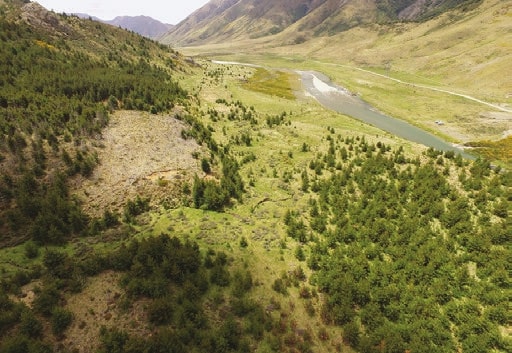
Detecting wilding pines
Remote sensing experts are working at sites near Tekapo, Geraldine, Hamner Springs and in the Kaweka Ranges. These sites range from flat and tussock-covered to rugged and rocky hills. Not only do they represent the range of environments at risk from wilding pine infestation, they also cover the range of site complexity that could be expected.
Grasslands
Flattish grasslands are possibly the easiest environment in which to spot wilding pines. Recent work has looked at seedlings spreading out from a shelter belt of P. ponderosa and P. sylvestris near Tekapo. A very thorough field survey of 17,000 trees recorded the location, height, crown and whether they were producing cones or not. The area was scanned using laser and spectral scanners mounted on both a plane and a drone.
Using a combination of the visible and near infrared spectra, combined with the canopy height derived from the lidar data, the researchers were able to detect practically all wildings greater than one metre high compared with field survey data. The data from the drone-mounted sensors was slightly more accurate than those mounted on the plane.
One of the most effective and cost-efficient ways to control wildings is to find and eradicate them before they start to produce cones. Over 99 per cent of the coning trees at this site were detected, showing that it is possible to detect Scots pine and ponderosa pine before they become prolific seeders. Both these species take more than 10 years to reach maturity. However, P. contorta, the number one problem wilding pine species, starts producing cones at much younger age and smaller size, which will make detecting them remotely more challenging. Further work at the Tekapo site is planned to look at how the invasion progresses with time, and how it responds to control intervention.
Mixed landscapes
The landscape at the Geraldine site is more complex than that around Tekapo. The land is steep and broken and covered in a mixture of Douglas-fir, bracken, tussock and manuka stands up to four metres in height.
A field survey recorded the location and measurements of every invasive conifer as well as non-target vegetation. Remote sensing data, including lidar and multi-spectral imagery acquired using a small plane was provided by the land manager.
As for the Tekapo site, the lidar data and spectral data were combined to increase detection efficacy and 84 per cent of the conifers present were correctly identified. Light in the near infrared was the most useful for differentiating the invasive conifers from the surrounding vegetation.
Complex terrain
The site chosen near Hamner has already been extensively ground surveyed and studied by Maanaki Whenua Landcare Research and the University of Canterbury. Scion has carried out some drone flights and hopes to use the existing ground data to find out how well remote sensing picks out wildings in the more complex environment.
In the Kaweka Ranges, remote sensing data has been collected in an area where scattered trees have been controlled to answer the question − can we detect killed trees in complex vegetation that ranges from shrublands to grasslands? Work is continuing.
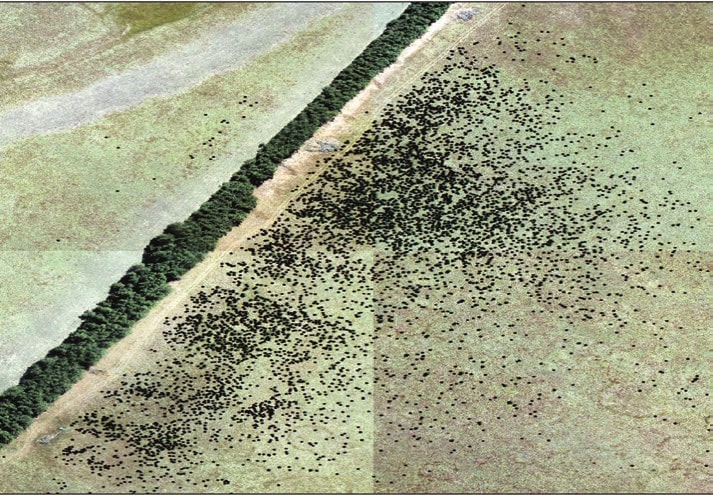
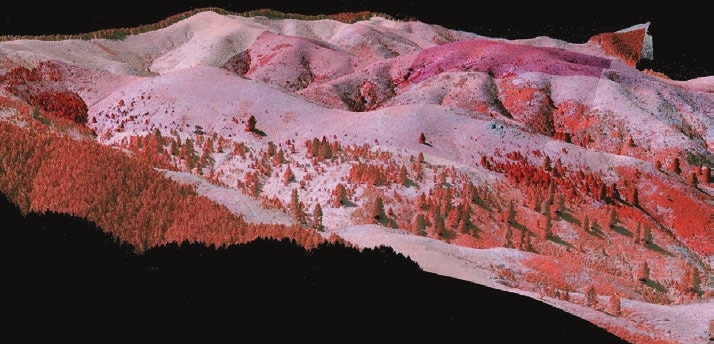
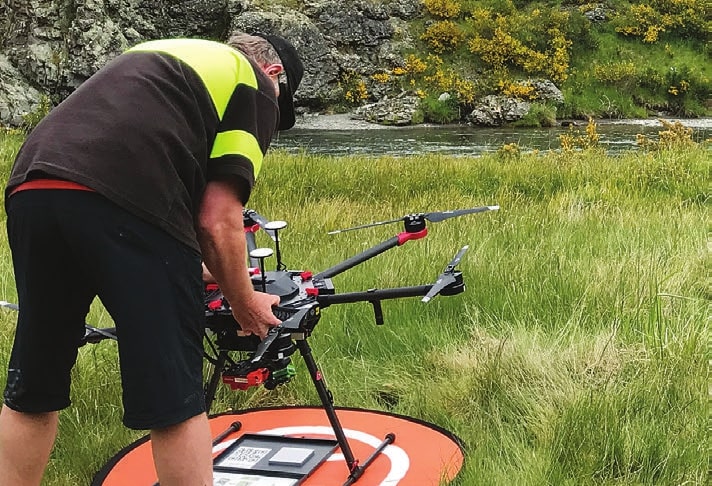

Wilding control
Land owners should be good neighbours and control wilding pines on their properties to prevent their spread. In some regions, the Regional Pest Management Plan may list wilding conifers as pest species and have rules that require land holders to control these plants. For example, the Bay of Plenty Regional Council classifies P. contorta lodgepole pine as a pest plant and land occupiers are required to destroy any lodgepole pine on their properties. It is an offence under the Biosecurity Act to propagate, sell, distribute, release or spread lodgepole pine in the Bay of Plenty.
Ideally, control should start as early as possible as scattered trees can rapidly turn into dense forest sending the costs of control spiralling upwards. The currently deployed operational approach is to control seedlings and outlying trees first, and work back to the original seed source. Monitoring and management are needed in the five to six years after the initial control because remaining seed still germinates and small seedlings are often not found. In some situations, management can be achieved by grazing and fertilising to encourage grasses that compete with wildings. Young radiata is apparently quite palatable to stock, but Douglas-fir and Corsican pine much less so.
When infestations get out of hand, and in wilder country, herbicides are the main methods used to manage wildings. They can be effective, but high usage rates are needed and unwanted effects on surrounding vegetation and waterways are a concern. Scion scientists are working on more accurate herbicide application especially where conifers are clumped or scattered across large areas. A better understanding of how trees respond to different herbicides doses and how to get herbicide into and through the plant would also make wilding control more effective, cheaper and reduce off-target effects on the environment.
Unmanned aerial vehicles again
Drones fly more slowly and spray from lower heights than helicopters offering a new level of precision. Targeting precision and spray coverage, particularly for spot spraying, with different drones has been investigated.
One craft, the XAG P20 quadcopter, has a spinning disc nozzle under each rotor. It can position itself over the target tree then spin on its central axis as it releases the specified dose of herbicide. Trials have found its performance was excellent, showing both high precision and accuracy in terms of the drone positioning over the target.
How good was the control?
Remote sensing can also be used to monitor the effectiveness of wilding control programmes. A team composed of Scion staff and researchers from the University of Trier, Germany, set up a ‘lab’ experiment to monitor the effects of herbicides on wildings using hyperspectral imagery. Lodgepole pines around two metres tall, and in pots, were sprayed with diquat as Reglone, or triclopyr as Grazon. Others were left untreated to act as controls. Diquat works by inhibiting photosynthesis whereas triclopyr mimics a hormone and causes uncontrolled and disorganised plant growth which leads to death.
Trees were placed on a conveyer belt and conveyed under a hyperspectral camera which scanned them as they passed. Hyperspectral cameras measure light waves up to the infrared, including wavelengths which can pick up changes in the needles and needle death. They also measure at a fine resolution, obtaining information in narrow bands of wavelengths. Changes in photosynthesis processes were also monitored.
Quite different visible and spectral changes and changes in the photosynthesis responses were observed for the two herbicides. A response to diquat was seen almost immediately and the needles were brown after three weeks. Discolouration from triclopyr was visible after two weeks. Changes in photosynthesis parameters also occurred later for triclopyr.
Using an index
The hyperspectral data was used to calculate an index termed the photochemical reflectance index, which gives an indication of how efficiently plants are using light during photosynthesis.
The index was able to differentiate between herbicide treatments and the control within two days following spraying. This suggests it could be used to detect changes in photosynthesis resulting from herbicide application and other stressors and to monitor how effective a spray programme has been.
For example, triclopyr has been found to work well in laboratory conditions but not so well in the field, with large trees surviving control treatments. The photochemical reflectance index could be used to assess damage after treatment and whether a follow up application is needed.
In this work, the camera was very close to the trees it scanned. The next step is to show that more distant monitoring is possible, using a drone for example. Satellite hyperspectral imagery would possibly be the most useful form of remote sensing to keep an eye on the effects of wilding control.
Make wood not love – an alternative to herbicide
The tendency of Douglas-fir to go wild just about eliminates it as a species choice in some areas. However, it is a desirable tree to grow producing valuable timber. One solution which would enable its wider planting is the development of a sterile clone.
As part of the ‘Winning against wildings’ programme, Scion is investigating the genes which are responsible for fertility and whether these could be switched off using gene editing. Gene editing, working with a plant’s own DNA, mimics natural mutations and is not considered genetic modification in many parts of the world, where similar work is under way on hardwoods.
A first generation of trees is growing indoors under tightly controlled conditions according to Environmental Protection Agency regulations. The plants will need to start producing cones before the final results of the work are known – this is a long-term project. As well as eliminating wildings, the 10 per cent of the plant’s energy which would have gone into reproduction will be focussed on making wood.
The future of wilding control
Remote sensing technology, combining hyperspectral and laser scanning data collected via satellite, unmanned aerial vehicles or larger aircraft, seems set to play a significant role in New Zealand’s efforts to identify and control wilding pines. Collecting data is becoming cheaper and more accurate as technology matures and as spatial and spectral resolution improves. Satellites, in particular, which make frequent scans, appear to be the most appropriate source for monitoring large and scattered wilding infestations.
Once wilding locations have been pin-pointed by remote sensing, drones and aircraft can be directed to carry out spray operations. It may also be possible to integrate remote sensing with control operations, with drones first identifying wildings, then spraying them. The diagram below shows how this could work.
Following control, the effectiveness of the operation, and the recovery of the land, can also be monitored with repeated remote sensing to make sure that wildings do not re-infest a controlled site.
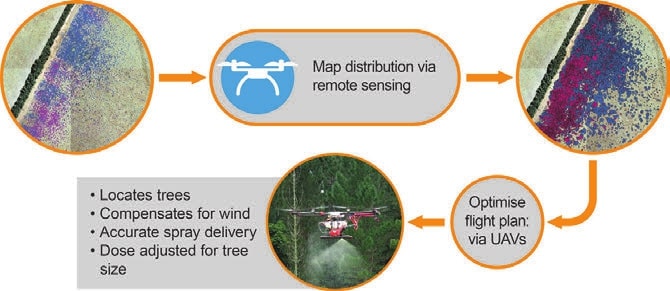
Using this research
How can owners of small to medium size forests and other land owners use this research? A number of companies around the country offer aerial laser scanning services to interested land owners. Other specialist companies also offer services based on satellite data. Scion is preparing a practical guide for the detection and mapping of wilding conifers for stakeholders. More practically, wilding control activities are taking place across the country through the national wilding conifer control programme. The website Prevent the Spread www.wildingconifers.org.nz is a good place to start. The Ministry for Primary Industries also have a lot of information on their website.
However, it is easiest to prevent wildings in the first place. With the One Billion Tree programme and the general call to plant trees for climate change mitigation, owners of small to medium forests and other land owners may be thinking about increased planting on their land. Considerations of climate, soil and plans for your land come into play. For example, planting a vigorously spreading species on an elevated or windy site might not be the wisest course of action. The right tree for the right place and right purpose principle applies more than ever.
Thanks to Michael Watt, Jonathan Dash and the Scion Forest Industry Informatics team, and Thomas Paul, Carol Rolando and members of Scion’s Forests Systems and Forest Protection teams. This work was partially funded by the Winning Against Wilding Programme (Ministry for Business, Innovation and Employment), and the Forest Growers Levy Trust.

 Farm Forestry New Zealand
Farm Forestry New Zealand